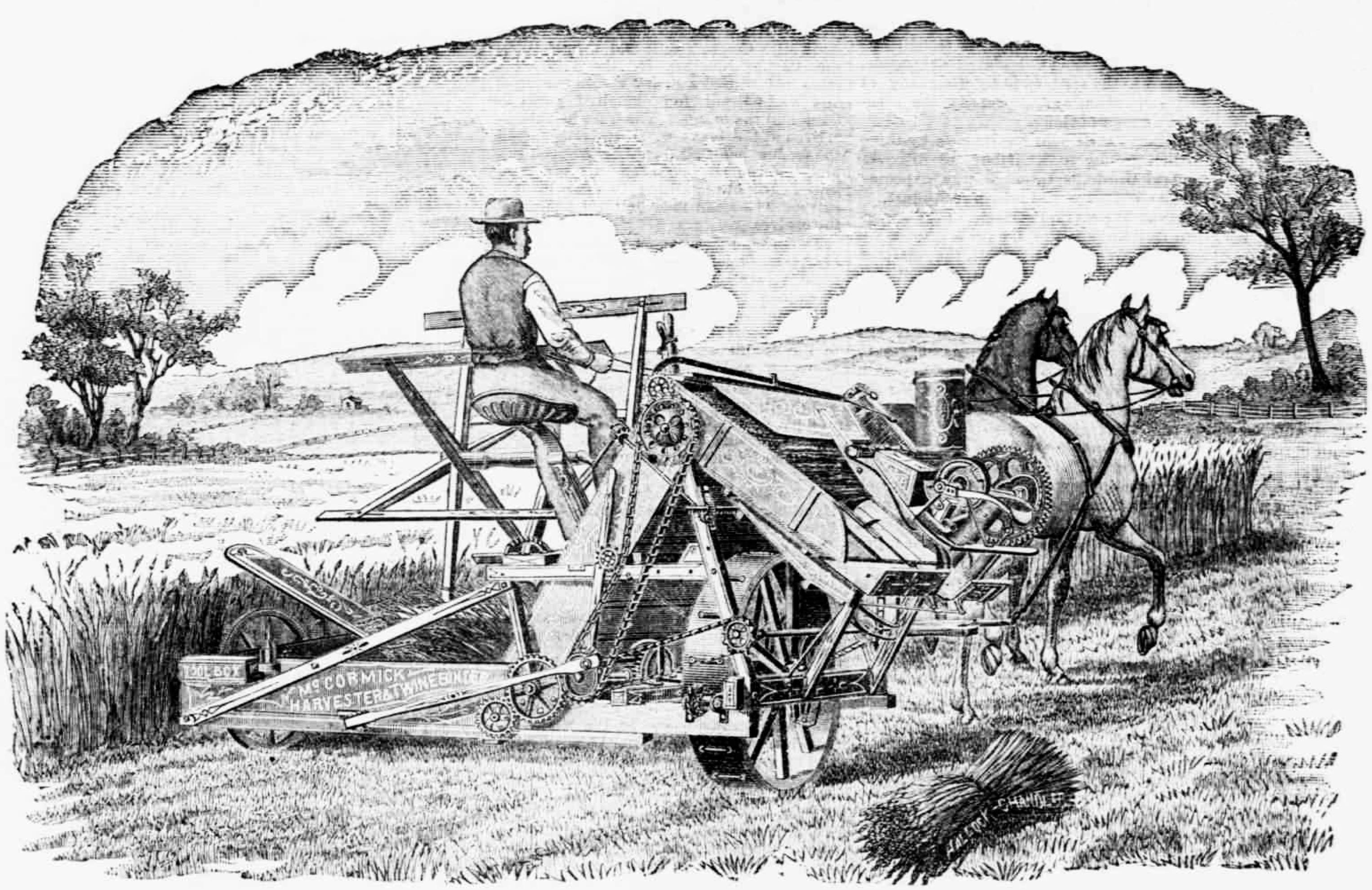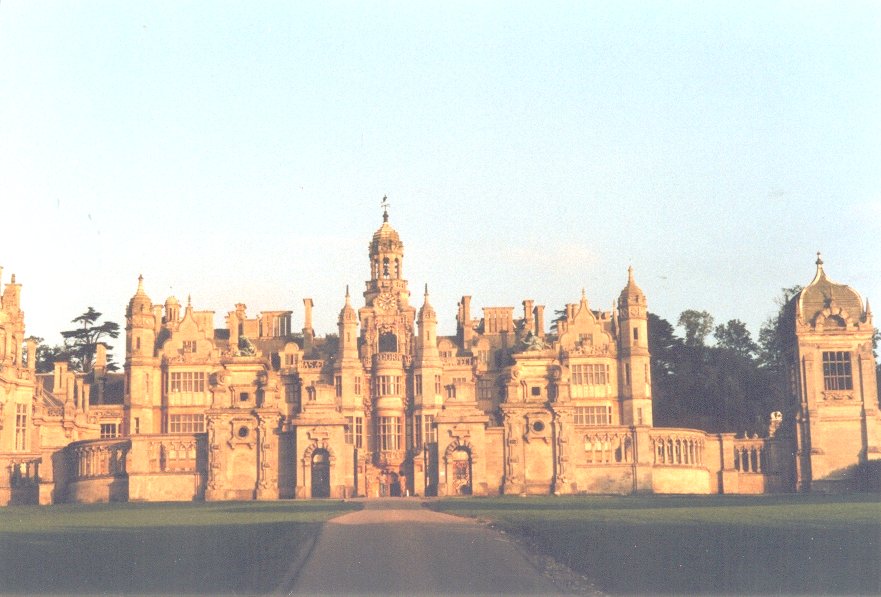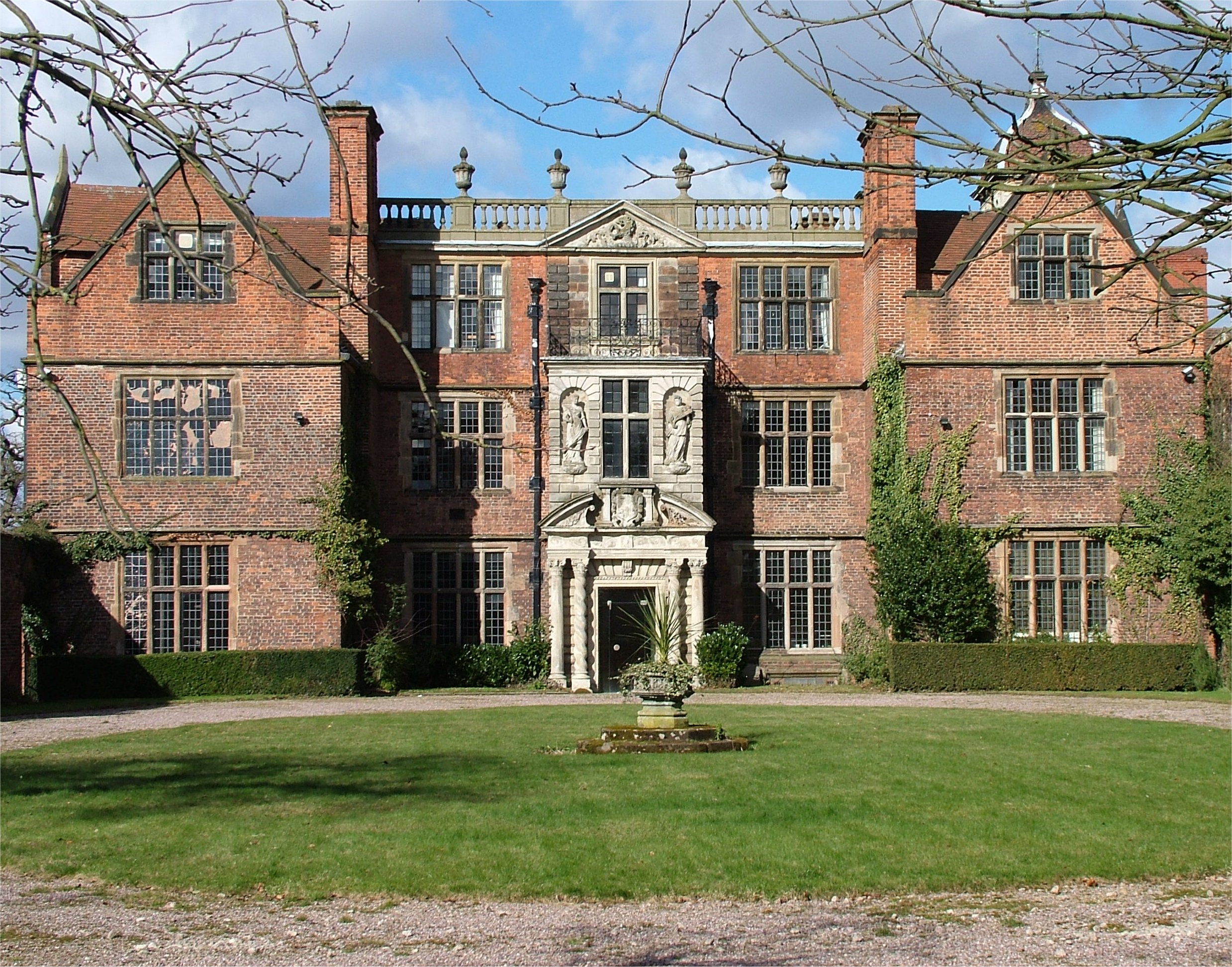|
James Stanhope (MP)
James Banks Stanhope (13 May 1821 – 18 January 1904) was a British Conservative Party politician. Family Stanhope was the son of former MP and British Army officer James Hamilton Stanhope and Lady Frederica-Louisa Murray, daughter of David William Murray, 3rd Earl of Mansfield. Revesby Abbey Stanhope inherited Revesby Abbey in 1823 from his father but did not succeed to the estate until 1842, however, as he was a minor. By the time he succeeded to the estate, it had fallen into disrepair and had been emptied. In 1843, he commissioned Scottish architect William Burn to redesign the new abbey in a mixture of Jacobean and Elizabethan, also known as Jacobethan. The building was demolished in 1844, with its materials sold at auction, to make way for the abbey's third incarnation. During this period, new screen gates and a lodge were added on the south boundary. The estate was then completed in 1846 and, following financial losses from the Great Depression of British Agriculture, ... [...More Info...] [...Related Items...] OR: [Wikipedia] [Google] [Baidu] |
Member Of Parliament (United Kingdom)
In the United Kingdom, a member of Parliament (MP) is an individual elected to serve in the House of Commons of the United Kingdom, House of Commons of the Parliament of the United Kingdom. Electoral system All 650 members of the UK House of Commons are elected using the first-past-the-post voting system in single member United Kingdom Parliament constituencies, constituencies across the whole of the United Kingdom, where each constituency has its own single representative. Elections All MP positions become simultaneously vacant for elections held on a five-year cycle, or when a snap election is called. The Fixed-term Parliaments Act 2011 set out that ordinary general elections are held on the first Thursday in May, every five years. The Act was repealed in 2022. With approval from Parliament, both the 2017 United Kingdom general election, 2017 and 2019 United Kingdom general election, 2019 general elections were held earlier than the schedule set by the Act. If a Vacancy (eco ... [...More Info...] [...Related Items...] OR: [Wikipedia] [Google] [Baidu] |
Revesby Abbey From Southeast In Lincolnshire England 2001 , a Cistercian monastery located near the village
{{geodis ...
Revesby can mean the following places :- * Revesby, New South Wales, a suburb in the City of Bankstown, Australia *Revesby, Lincolnshire, a civil parish in the East Lindsey district of Lincolnshire, England **Revesby Abbey Revesby Abbey was a Cistercian monastery near the village of Revesby in Lincolnshire, England. The abbey was founded in 1143 by William de Roumare, Earl of Lincoln, and the first monks came from Rievaulx Abbey. After the Dissolution of the Mon ... [...More Info...] [...Related Items...] OR: [Wikipedia] [Google] [Baidu] |
1821 Births
Eighteen or 18 may refer to: * 18 (number), the natural number following 17 and preceding 19 * one of the years 18 BC, AD 18, 1918, 2018 Film, television and entertainment * ''18'' (film), a 1993 Taiwanese experimental film based on the short story ''God's Dice'' * ''Eighteen'' (film), a 2005 Canadian dramatic feature film * 18 (British Board of Film Classification), a film rating in the United Kingdom, also used in Ireland by the Irish Film Classification Office * 18 (''Dragon Ball''), a character in the ''Dragon Ball'' franchise * "Eighteen", a 2006 episode of the animated television series '' 12 oz. Mouse'' Music Albums * ''18'' (Moby album), 2002 * ''18'' (Nana Kitade album), 2005 * '' 18...'', 2009 debut album by G.E.M. Songs * "18" (5 Seconds of Summer song), from their 2014 eponymous debut album * "18" (One Direction song), from their 2014 studio album ''Four'' * "18", by Anarbor from their 2013 studio album ''Burnout'' * " I'm Eighteen", by Alice Cooper commonly ... [...More Info...] [...Related Items...] OR: [Wikipedia] [Google] [Baidu] |
UK MPs 1859–1865
The United Kingdom of Great Britain and Northern Ireland, commonly known as the United Kingdom (UK) or Britain, is a country in Europe, off the north-western coast of the continental mainland. It comprises England, Scotland, Wales and Northern Ireland. The United Kingdom includes the island of Great Britain, the north-eastern part of the island of Ireland, and many smaller islands within the British Isles. Northern Ireland shares a land border with the Republic of Ireland; otherwise, the United Kingdom is surrounded by the Atlantic Ocean, the North Sea, the English Channel, the Celtic Sea and the Irish Sea. The total area of the United Kingdom is , with an estimated 2020 population of more than 67 million people. The United Kingdom has evolved from a series of annexations, unions and separations of constituent countries over several hundred years. The Treaty of Union between the Kingdom of England (which included Wales, annexed in 1542) and the Kingdom of Scotland in 17 ... [...More Info...] [...Related Items...] OR: [Wikipedia] [Google] [Baidu] |
Conservative Party (UK) MPs For English Constituencies
The Conservative Party is a name used by many political parties around the world. These political parties are generally right-wing though their exact ideologies can range from center-right to far-right. Political parties called The Conservative Party include: Europe Current * Croatian Conservative Party, * Conservative Party (Czech Republic) * Conservative People's Party (Denmark) * Conservative Party of Georgia * Conservative Party (Norway) *Conservative Party (UK) *The Conservatives (Latvia) Historical *Conservative Party (Bulgaria), 1879–1884 *Conservative Party (Kingdom of Serbia), 1861-1895 *German Conservative Party, 1876–1918 * Conservative Party (Hungary), 1846–1849 * Conservative Party (Iceland), 1924–1927 * Conservative Party (Prussia), 1848–1876 * Vlad Țepeș League, in Romania 1929–1938 * Conservative Party (Romania, 1880–1918) * Conservative Party (Romania), 1991–2015 * Conservative Party (Spain), 1876–1931 * Tories, Britain and Ireland 1678–18 ... [...More Info...] [...Related Items...] OR: [Wikipedia] [Google] [Baidu] |
Edward Stanhope
Edward Stanhope PC (24 September 1840 – 21 December 1893) was a British Conservative Party politician who was Secretary of State for War from 1887 to 1892. Background and education Born in London, Stanhope was the second son of Philip Stanhope, 5th Earl Stanhope, by his wife Emily Harriet, daughter of General Sir Edward Kerrison, 1st Baronet. Arthur Stanhope, 6th Earl Stanhope was his elder brother and Philip Stanhope, 1st Baron Weardale his younger brother. He was educated at Harrow and Christ Church, Oxford. Stanhope studied law, being called to the bar at the Inner Temple in 1865. In 1861 he played three first-class cricket matches for Kent County Cricket Club.Carlaw D (2020) ''Kent County Cricketers A to Z. Part One: 1806–1914'' (revised edition), pp. 501–503.Available onlineat the Association of Cricket Statisticians and Historians. Retrieved 2020-12-21.) Political career In 1874 Stanhope was elected to the House of Commons for Mid Lincolnshire, a seat he hel ... [...More Info...] [...Related Items...] OR: [Wikipedia] [Google] [Baidu] |
Great Depression Of British Agriculture
The Great Depression of British Agriculture occurred during the late nineteenth century and is usually dated from 1873 to 1896. Contemporaneous with the global Long Depression, Britain's agricultural depression was caused by the dramatic fall in grain prices that followed the opening up of the American prairies to cultivation in the 1870s and the advent of cheap transportation with the rise of steamships. British agriculture did not recover from this depression until after the Second World War. Other countries in Western Europe such as the Netherlands experienced the same agricultural crisis (1878–1895) as a result of the market being flooded by cheap grain from the United States and Canada.Encarta-encyclopedie Winkler Prins (1993–2002) s.v. "landbouwpolitiek § geschiedenis", "Leeuwarden §3. geschiedenis". Microsoft Corporation/Het Spectrum. Background In 1846 Parliament repealed the Corn Laws, which had imposed a tariff on imported grain, and thereby ''de facto'' inst ... [...More Info...] [...Related Items...] OR: [Wikipedia] [Google] [Baidu] |
Jacobethan
The Jacobethan or Jacobean Revival architectural style is the mixed national Renaissance revival style that was made popular in England from the late 1820s, which derived most of its inspiration and its repertory from the English Renaissance (1550–1625), with elements of Elizabethan and Jacobean. John Betjeman coined the term "Jacobethan" in 1933, and described it as follows: The style in which the Gothic predominates may be called, inaccurately enough, Elizabethan, and the style in which the classical predominates over the Gothic, equally inaccurately, may be called Jacobean. To save the time of those who do not wish to distinguish between these periods of architectural uncertainty, I will henceforward use the term "Jacobethan". The term caught on with art historians. Timothy Mowl asserts in ''The Elizabethan and Jacobean Style'' (2001) that the Jacobethan style represents the last outpouring of an authentically native genius that was stifled by slavish adherence to Euro ... [...More Info...] [...Related Items...] OR: [Wikipedia] [Google] [Baidu] |
Elizabethan Architecture
Elizabethan architecture refers to buildings of a certain style constructed during the reign of Queen Elizabeth I of England and Ireland from 1558–1603. Historically, the era sits between the long era of the dominant architectural style of religious buildings by the Catholic Church, which ended abruptly at the Dissolution of the Monasteries from c.1536, and the advent of a court culture of pan-European artistic ambition under James I (1603–25). Stylistically, Elizabethan architecture is notably pluralistic. It came at the end of insular traditions in design and construction called the Perpendicular style in the church building, the fenestration, vaulting techniques, and open truss designs of which often affected the detail of larger domestic buildings. However, English design had become open to the influence of early printed architectural texts (namely Vitruvius and Alberti) imported to England by members of the church as early as the 1480s. Into the 16th century, il ... [...More Info...] [...Related Items...] OR: [Wikipedia] [Google] [Baidu] |
Jacobean Architecture
The Jacobean style is the second phase of Renaissance architecture in England, following the Elizabethan style. It is named after King James VI and I, with whose reign (1603–1625 in England) it is associated. At the start of James' reign there was little stylistic break in architecture, as Elizabethan trends continued their development. However, his death in 1625 came as a decisive change towards more classical architecture, with Italian influence, was in progress, led by Inigo Jones; the style this began is sometimes called Stuart architecture, or English Baroque (though the latter term may be regarded as starting later). Courtiers continued to build large prodigy houses, even though James spent less time on summer progresses round his realm than Elizabeth had. The influence of Flemish and German Northern Mannerism increased, now often executed by immigrant craftsmen and artists, rather than obtained from books as in the previous reign. There continued to be very little ... [...More Info...] [...Related Items...] OR: [Wikipedia] [Google] [Baidu] |
William Burn
William Burn (20 December 1789 – 15 February 1870) was a Scottish architect. He received major commissions from the age of 20 until his death at 81. He built in many styles and was a pioneer of the Scottish Baronial Revival,often referred to as the golden age of Scottish architecture. Life Burn was born in Rose Street in Edinburgh, the son of architect Robert Burn and his wife Janet Patterson. He was the fourth born and the eldest survivor of the 16 children born. William was educated at the High School in Edinburgh's Old Town. He started training with Sir Robert Smirke in London in 1808. This is where worked on Lowther Castle with C.R. Cockerell, Henry Roberts, and Lewis Vulliamy. After training with the architect Sir Robert Smirke, designer of the British Museum, he returned to Edinburgh in 1812. Here he established a practice from the family builders' yard. His first independant commission was in Renfrewshire. In 1812 he designed the exchange assembly rooms for the G ... [...More Info...] [...Related Items...] OR: [Wikipedia] [Google] [Baidu] |
Revesby Abbey
Revesby Abbey was a Cistercian monastery near the village of Revesby in Lincolnshire, England. The abbey was founded in 1143 by William de Roumare, Earl of Lincoln, and the first monks came from Rievaulx Abbey. After the Dissolution of the Monasteries in the 16th century, the Abbey was demolished and a country house built. The current house was built in the mid-19th century, but is in poor condition. Unoccupied since the 1960s and previously earmarked for demolition, the house is currently listed on the English Heritage "At Risk" register, but says there is a "repair scheme in progress and (where applicable) end use or user identified". History Revesby Abbey was founded in 1142 by William de Roumare, Earl of Lincoln, who became a monk at the abbey in his later life, and was then buried within the abbey. The first monks at the abbey were sent from Rievaulx Abbey in Yorkshire. [...More Info...] [...Related Items...] OR: [Wikipedia] [Google] [Baidu] |




_cropped_2.jpg)
